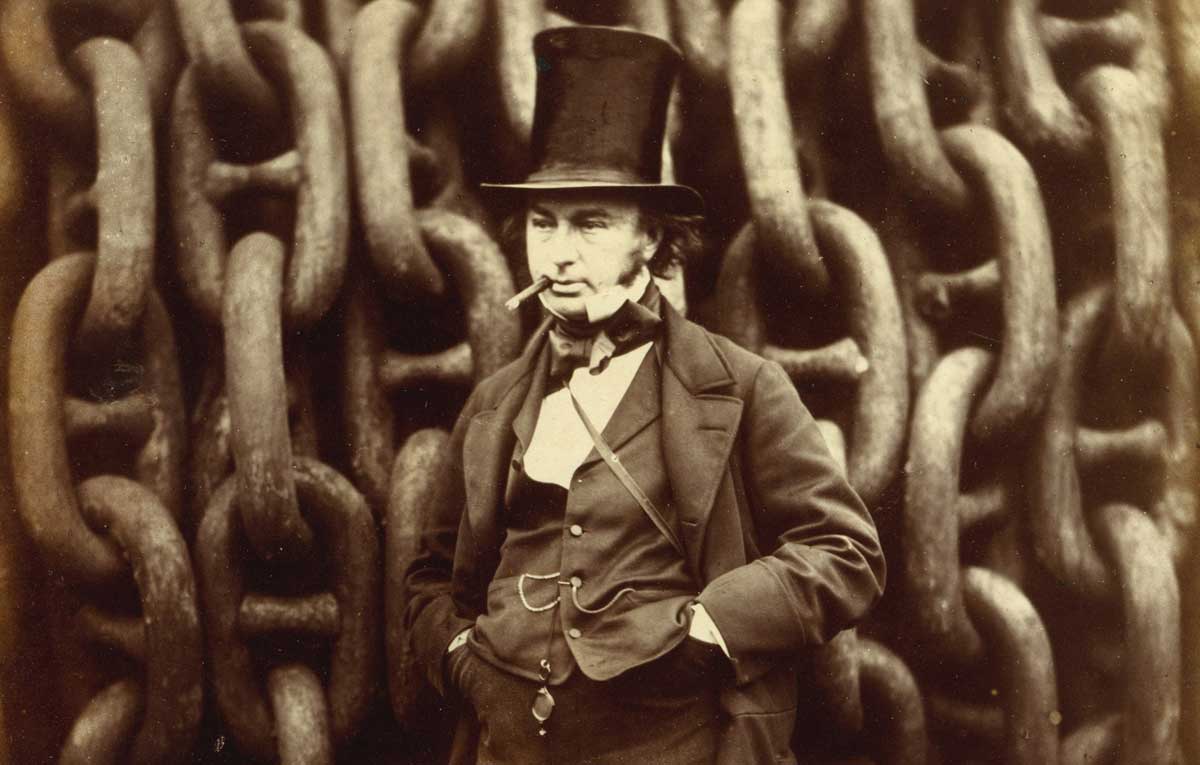French-born British engineers: Who are Marc Isambard Brunel and Isambard Kingdom?
They shaped the engineering of the 19th century with the technical solutions they brought to the construction of underwater tunnels and railway bridges.

Marc Isambard Brunel (1769-1849) and Isambard Kingdom (1806-1859) were English engineers of French descent. They shaped the engineering of the 19th century with the technical solutions they brought to the construction of underwater tunnels and railway bridges.
Marc Isambard Brunel was born on April 25, 1769, in Hacqueville, in the Manche district. While he was a six-year officer in the French navy in 1793, he fled to the United States in the first days of the I Republic, which ended the monarchy. After working as an architect, urban designer, and civil engineer in New York, he settled in England in 1799. He pioneered mass production by establishing a factory in Portsmouth that produced pulley hulls for ships, greatly reducing manual labor. However, despite his brilliant inventions and being a very successful engineer, he could not show the same success in his commercial relations and went bankrupt in 1821. Brunel, who escaped from the prison sentence he was sentenced to due to his debts with the government's bail, prepared a tunnel project under the Thames with the help of his son, and this great work that started in 1825 was only completed in 1843. Two years after this success, he received the title of "Sir" and died in London on 12 December 1849.
His son, Isambard Kingdom Brunel, was born on April 9, 1806, in Portsmouth. From 1825 to 1828, he was the site manager of the Thames Tunnel project under his father's control. When the flood that hindered the work and financial difficulties delayed the implementation of this project for a while, he turned to suspension bridge and shipyard designs. Brunel, who gained fame in a short time with his successful engineering works, was elected a member of the Royal Society in London in 1830, and in 1833 he was appointed chief engineer of the Great Western Railway Company. Brunel, who gave the most successful examples of 19th-century naval engineering with steamships designed for transoceanic voyages between 1838-1858, died in London on September 15, 1859.
Brunel's greatest engineering achievement is that he started the construction of underwater tunnels by solving technical problems that could not be overcome until that day. Indeed, the construction of such tunnels, the first examples of which were seen in the second half of the 17th century, was extremely difficult due to the underwater working conditions. Brunel designed a three-layer protective shield made of cast iron as a solution to this problem. This shield, which advanced along the river bed and blocked the water body in the working area, facilitated the operation of some machinery and the construction of the tunnel walls. This technique, which was successfully applied for the first time in the 460 m long Thames Tunnel, greatly influenced the development of rail transport by overcoming river obstacles.
His son, Brunel, is one of the successful engineers who made great efforts in the construction of railways and bridges in England and applied the compressed air technique for the first time in the burying of bridge piers. In addition, after 1838, he turned his attention to ship engineering and pioneered new developments in this field. Launched in 1838 and operating between Bristol and New York, the 2,300-ton "Great Western" was a wooden paddle-wheeled vessel. This was followed by the 3,600-tonne "Great Britain" with an iron hull and propeller, which he completed in 1841. The 32,000-ton Great Eastern, which he built in 1858, was a 4,000-man ship with both propeller and paddle wheels designed for transoceanic voyages. Although he never made a cross-ocean voyage due to his high coal consumption, the Great Eastern remained the largest ship in the world for fifty years.
Father and son Brunels contributed to the development of railway and maritime transportation and directed 19th-century engineering with their designs and applications.
---------------------------------------------------------------
Birth of Isambard Kingdom Brunel
The great Victorian engineer was born on 9th April 1806.
https://www.historytoday.com/archive/birth-isambard-kingdom-brunel
